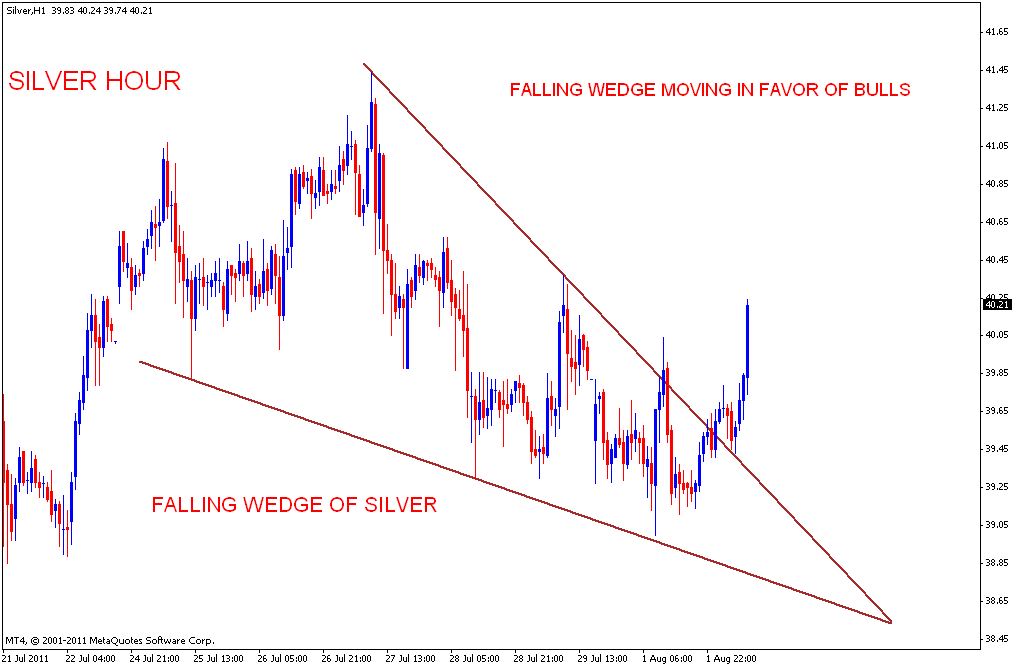Contents:

If you are not familiar with support and resistance, you can learn about them here. “It pays to wait for that breakout and to act immediately on it. A rising wedge invariably will break downward, and a declining wedge upward. Whenever a climax has occurred, whether up or down, look for a wedge to form on the test. Just be sure the wedge as described previously is valid before you take any action.” .

Are wedge patterns accurate?
The wedge pattern is a popular pattern to use when trading the financial market. It is also one of the most accurate. There are several benefits of using the pattern.
When a falling wedge occurs in an overall downtrend, it signals slowing downside momentum. This may forecast a rally in price if and when the price moves higher, breaking out of the pattern. One of the great things about this type of wedge pattern is that it typically carves out levels that are easy to identify. This makes our job as price action traders that much easier not to mention profitable.
Bullish Wedge Pattern
The two trend lines are drawn to connect the respective highs and lows of a price series over the course of 10 to 50 periods. The lines show that the highs and the lows are either rising or falling at differing rates, giving the appearance of a wedge as the lines approach a convergence. Wedge shaped trend lines are considered useful indicators of a potential reversal in price action by technical analysts. The Falling Wedge is a bullish pattern that begins wide at the top and contracts as prices move lower.
In a descending wedge pattern trend what seems to be a Rising Wedge may actually be a Flag or a Pennant requiring about 4 weeks to complete. The area of the wedge breakout then serves as a resistance line on a subsequent rally. Note that the volume on the bearish breakout is relatively low in this continuation move, although it is still higher than the trading volume in the days prior to the breakout. Falling wedges are the inverse of rising wedges and are always considered bullish signals. They develop when a narrowing trading range has a downward slope, such that subsequent lows and subsequent highs within the wedge are falling as trading progresses. Wedge-shaped patterns in particular are considered significantly important indicators of a plausible price action reversal, which can prove to be beneficial during trading.
How to Short Sell Crypto
Along those lines, if you see the stock struggling on elevated volume, it could be a good indication of distribution. Below are some of the more important points to keep in mind as you begin trading these patterns on your own. Regardless of which stop loss strategy you choose, just remember to always place your stop at a level that would invalidate the setup if hit. In the illustration above, we have a consolidation period where the bears are clearly in control. We know this to be true because the market is making lower highs and lower lows.
- We will discuss technical indicators in the upcoming Bitfinex Trading 101 series, so stay tuned!
- A doji is a trading session where a security’s open and close prices are virtually equal.
- Incorporate volume – Volume is an important part of trading rising and falling wedges.
- Sign up to Bitfinex newsletter to make sure you won’t miss out or follow Bitfinex YouTube channel for insightful content in video format.
This creates a downtrend where the price waves to the downside are contracting or converging. In different cases, wedge patterns play the role of a trend reversal pattern. In order to identify a trend reversal, you will want to look for trends that are experiencing a slowdown in the primary trend. This slowdown can often terminate with the development of a wedge pattern. Both of these patterns can be a great way to spot reversals in the market.
What’s the difference between the falling wedge pattern and the descending triangle pattern?
However, they can occur in the middle of a strong upward movement, in which case the bullish movement at the end of the wedge is a continuation of the overall bullish trend. A wedge pattern is a triangular continuation pattern that forms in all assets such as currencies, commodities, and stocks. Unlike other candlestick patterns, the wedge forms within a longer period of time, between hours and days. For example, Bitcoin started forming a falling wedge pattern after it surged to almost $14k in June of 2019. Investors who could point it out saved their investment, but those who couldn’t, lost a significant amount. Despite that, Bitcoin recovered the losses a few months later by once again rising in value.

Although the illustrations above show more of a rounded retest, there are many times when the retest of the broken level will occur immediately following the break. Notice how all of the highs are in-line with one another just as the lows are in-line. If a trend line cannot be placed cleanly across both the highs and the lows of the pattern then it cannot be considered valid. XRP will give you a life-time opportunity to buy for an extremely cheap price, around 0.18 USDT! It’s going to happen probably very soon, so make sure you are prepared! As you can see, the massive pump in 2017 was very strong, and right now XRP has been consolidating in this bullish regular flat pattern (3-3-5)….
Options are not suitable for all investors as the special risks inherent to options trading may expose investors to potentially rapid and substantial losses. Prior to trading options, you should carefully read Characteristics and Risks of Standardized Options. When the price of a security has been declining over time, a wedge pattern might form just before the trend reaches its lowest. Rising and falling wedges are only a minor component of a transitional or main trend. A wedge formation is described as a pattern that is formed at the upper side or the lower side of a trend. It is a type of pattern development in which trade operations are limited to convergent straight lines, thereby making a pattern.
Rising and falling wedges are a technical chart pattern used to predict trend continuations and trend reversals. In many cases, when the market is trending, a wedge pattern will develop on the chart. This wedge could be either a rising wedge pattern or falling wedge pattern.
Wedge Patterns Simplified
It consists of two nonparallel lines that, if extended, will meet on their right side. As the price bounces up and down between the two extremes, the price action becomes more compressed as the bullish and bearish reactions draw the lines closer together. If and when the prices break the upper trendline, the descending wedge pattern is complete, and the stock should move higher in price. An ascending triangle is a chart pattern used in technical analysis created by a horizontal and rising trendline.

Like the strategies and patterns we trade, there are certain confluence factorsthat must be respected. As you can see, there is no “one size fits all” when it comes to trading rising and falling wedges. However, by applying the rules and concepts above, these breakouts can be quite lucrative. Both the rising and falling wedge will often lead to the formation of another common reversal pattern. You can even see the structure in the illustrations above. The first thing to know about these wedges is that they often hint at a reversal in the market.
What is a bearish wedge?
The rising (ascending) wedge pattern is a bearish chart pattern that signals an imminent breakout to the downside. It's the opposite of the falling (descending) wedge pattern (bullish), as these two constitute a popular wedge pattern.
https://g-markets.net/ typically reduces after a while, and this is when buyers, who have been holding cash or stablecoins, pounce on the asset with full buying power, hereby causing a reversal. New traders hold on to losers way too long and cut their winners out too soon. It seems so easy to do, but in practice, it’s very hard. We hold on to losers because we don’t want to lose our money, we hope prices will return to at least a level for a break-even trade. We call them flags and pennants because of what they look like. The prior uptrend is like a pole, and the falling wedge is the pennant ‘waving’ on the pole.
- Supporting documentation for any claims, comparison, statistics, or other technical data will be supplied upon request.
- How the pattern performed in the past provides insights when the pattern appears again.
- We’ve already established that the entry is on the breakout of the wedge.
- In both cases, we enter the market after the wedges break through their respective trend lines.
- Because the rising wedge pattern is commonly seen after prolonged trends, it can be very useful and effective in trading Bitcoin and other cryptocurrencies.
- Or, in other words, it may indicate a trend reversal or trend continuation.
The rising wedge pattern can be formed in both an uptrend and a downtrend. When formed in an uptrend, it signals a continuation, which means the price is expected to continue moving upward. When formed in a downtrend, it signals a trend reversal, so the price is expected to move in a different direction and break the resistance line. When formed in an uptrend, it signals a reversal, which means the price is expected to move in a different direction and break the support line. When formed in a downtrend, it signals a trend continuation, so the price is expected to continue moving downward. The falling wedge pattern is a continuation pattern formed when price bounces between two downward sloping, converging trendlines.
B2Gold: Market Should Have A Second Look At This One (NYSE:BTG) – Seeking Alpha
B2Gold: Market Should Have A Second Look At This One (NYSE:BTG).
Posted: Sun, 26 Feb 2023 15:24:22 GMT [source]
The best place to practice any strategy is in a market simulator. We suggest flipping through as many charts of the more liquid names in the market. Get out your trend line tools and see how many rising and falling wedges you can spot. Draw them, and then make note of the price action on the breakout or breakdown, identifying what made them a bearish wedge or a bullish wedge. Conversely, the two ascending wedge patterns develop after a price increase as well. For this reason, they represent the exhaustion of the previous bullish move.
Is a Rising wedge ever bullish?
The Rising Wedge is a bearish pattern that begins wide at the bottom and contracts as prices move higher and the trading range narrows. In contrast to symmetrical triangles, which have no definitive slope and no bullish or bearish bias, rising wedges definitely slope up and have a bearish bias.
Is rising wedge always bearish?
Is a Rising Wedge Bullish or Bearish? A rising wedge is generally a bearish signal as it indicates a possible reversal during an up-trend. Rising wedge patterns indicate the likelihood of falling prices after a breakout through the lower trend line.
